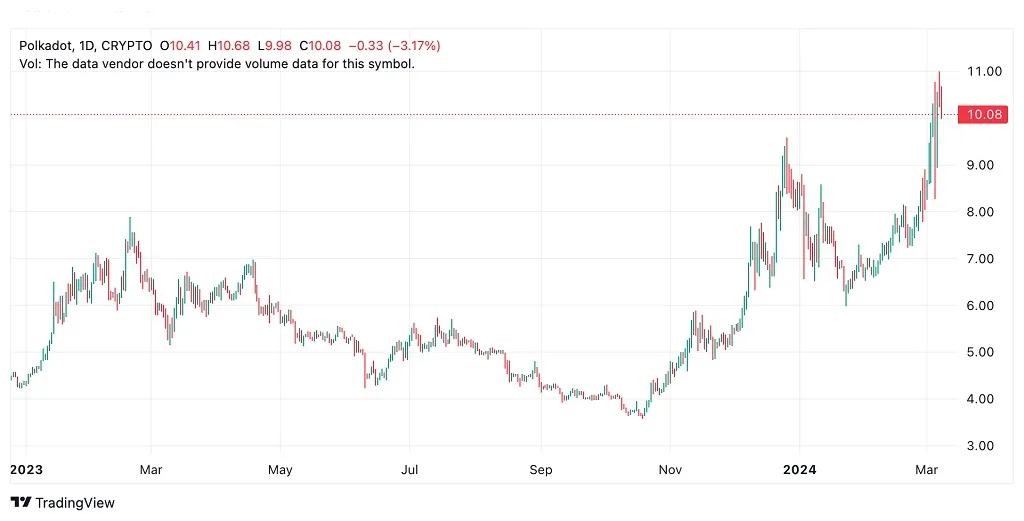
The Polkadot Protocol: Bridging the Future of Cryptocurrencies
As the digital age forges ahead, cryptocurrencies have emerged from the shadows of niche online forums to become a cornerstone of modern financial discussions. Their meteoric rise to popularity reflects a growing desire for decentralized and secure financial transactions. In this exploration, we delve into the intricacies of one particular cryptocurrency, Polkadot, and its unique position in the digital currency landscape.
What Are Cryptocurrencies and Why Are They So Popular Today
Cryptocurrencies, at their core, are digital or virtual forms of currency that use cryptography for security, making them nearly impossible to counterfeit. The allure of cryptocurrencies like Bitcoin, Ethereum, and Polkadot lies not just in their potential for financial gain but in the foundational shift they represent away from centralized banking systems toward a decentralized, blockchain-based financial ecosystem.
The popularity of cryptocurrencies can be attributed to several factors: their potential to disrupt traditional financial systems, the privacy and security they offer, and the investment opportunities they present. As digital literacy and internet accessibility increase globally, so does the appeal of cryptocurrencies as a secure, transparent, and efficient means of transaction.
Where It All Started and When and How It Reached the Level It Is Now
The journey of cryptocurrencies began with the creation of Bitcoin in 2009, envisioned as a peer-to-peer electronic cash system free from the control of any central authority. The success of Bitcoin paved the way for other cryptocurrencies, each seeking to improve or offer alternatives to the Bitcoin model.
Polkadot’s inception represents a significant milestone in this evolution. Launched in 2020 by Ethereum co-founder Gavin Wood, Polkadot was designed to address a critical challenge in the cryptocurrency space: interoperability. Its mission is to enable different blockchains to communicate and work together, a feature starkly absent in earlier cryptocurrencies.
What Kind of Currency Is This Polkadot
Polkadot is more than just a cryptocurrency; it’s a multi-chain protocol that facilitates the cross-chain transfer of any data or asset types, not just tokens. This makes it possible for various blockchains to interoperate seamlessly, creating a web of interconnected networks.
Polkadot stands out for its scalable, secure, and innovative structure, which consists of the Relay Chain (Polkadot’s heart), Parachains (individual blockchains), and Bridges (links to external blockchains). This design enables an unprecedented level of interoperability, scalability, and security.

On the Basis of What Technology It Was Created
The technology underpinning Polkadot is a cutting-edge consensus mechanism known as Nominated Proof of Stake (NPoS). This system not only secures the network but also ensures that the process of adding new blocks to the blockchain is efficient and environmentally sustainable compared to the traditional Proof of Work (PoW) mechanism.
Moreover, Polkadot’s Substrate framework allows developers to build customized blockchains quickly and efficiently. These blockchains can then be connected to Polkadot’s network, benefiting from the protocol’s interoperability and security features.
How Stable Is the Currency
The stability of Polkadot, like all cryptocurrencies, is influenced by market dynamics and the inherent volatility of the crypto market. However, Polkadot’s robust technology and strong backing by a vibrant community and a suite of emerging projects suggest its potential for long-term stability and growth.
What Is Its Future Prospects With Current Trends
In the fast-evolving world of cryptocurrencies, Polkadot is seen as a formidable contender for shaping the future of blockchain technology. With its focus on interoperability, scalability, and innovation, Polkadot is well-positioned to play a crucial role in the next generation of decentralized applications.
As the crypto space continues to grow, the demand for technologies that can bridge the gap between diverse blockchains will only increase. Polkadot’s innovative approach to solving these challenges places it at the forefront of the industry, promising a bright future in the landscape of digital currencies.




